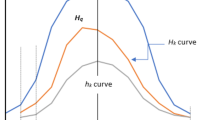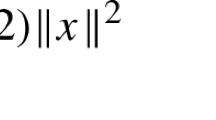Abstract
In this paper some simple ideas about ordered sets and inverse functions are developed into a theory of inverse pairs of optimization problems. This relationship is shown to permit the use of root-finding methods to find a solution for one problem through a sequence of solutions to the other. A variety of problems showing this relationship are presented as examples.
Similar content being viewed by others
References
R.A. Blau, “On some optimization problems under uncertainty”, Doctoral Thesis, Technical Report 49, Department of Statistics, Carnegie-Mellon, Pittsburgh (1971).
R.G. Cassidy, C.A. Field and M.J.L. Kirby, “Solution of a satisficing model for random payoff games”,Management Science 19 (1972) 266–271.
D. Gale,Theory of linear economic models (McGraw-Hill, New York, 1960).
A. Geoffrion, “Stochastic programming with aspiration or fractile criteria”,Management Science 13 (1967) 672–679.
J. Philip, “Algorithms for the vector maximization problem”,Mathematical Programming 2 (1972) 207–229.
Author information
Authors and Affiliations
Additional information
This research was partially supported by the National Research Council of Canada under grants A7675 and A7751.
Rights and permissions
About this article
Cite this article
Cassidy, R.G., Field, C.A. & Sutherland, W.R.S. Inverse programming: Theory and examples. Mathematical Programming 4, 297–308 (1973). https://doi.org/10.1007/BF01584672
Received:
Revised:
Issue Date:
DOI: https://doi.org/10.1007/BF01584672




